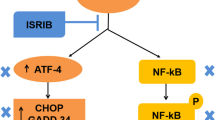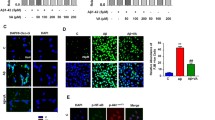Summary
Chronic stress plays a critical role in the etiology of sporadic Alzheimer’s disease (AD). However, there are currently no effective drugs that can target chronic stress to prevent AD. In this study, we explored the neuroprotective effect of hydroxysafflor yellow A (HSYA) against chronic mild stress (CMS)-induced memory impairments in mice and the underlying mechanism. The Morris water maze test showed that HSYA significantly reduced CMS-induced learning and memory impairments in mice. HSYA increased the expression of brain-derived neurotrophic factor (BDNF) and activated downstream tropomyosin-related kinase B (TrkB) and phosphatidylinositol 3-kinase (PI3K)/protein kinase B(Akt)/mammalian target of rapamycin (mTOR) signaling. HSYA decreased the expression of regulator of calcineurin 1-1L (RCAN1-1L) that could promote the activity of glycogen synthase kinase-3β (GSK-3β). HSYA also attenuated tau phosphorylation by inhibiting the activity of GSK-3β and cyclin-dependent kinase-5 (Cdk5). Our data indicated that HSYA has protective effects against CMS-induced BDNF downregulation, tau phosphorylation and memory impairments. HSYA may be a promising therapeutic candidate for AD by targeting chronic stress.
Similar content being viewed by others
References
Laferla FM, Oddo S. Alzheimer’s disease: Aβ, tau and synaptic dysfunction. Trends Mol Med, 2005,11(4):170–176
Goedert M, Spillantini MG. A century of Alzheimer’s disease. Science, 2006,314(5800):777–781
Moceri VM, Kukull WA, Emanuel I, et al. Early-life risk factors and the development of Alzheimer’s disease. Neurology, 2000,54(2):415–420
Sotiropoulos I, Catania C, Pinto LG, et al. Stress Acts Cumulatively to Precipitate Alzheimer’s Disease-Like Tau Pathology and Cognitive Deficits. J Neurosci, 2011, 31(21):7840–7847
Duman RS, Monteggia LM. A Neurotrophic Model for Stress-Related Mood Disorders. Biol Psychiat, 2006, 59(12):1116–1127
Johansson L, Skoog I, Gustafson DR, et al. Midlife psychological distress associated with late-life brain atrophy and white matter lesions: a 32-year population study of women. Psychosom Med, 2012,74(2):120–125
Norton MC, Smith KR, Østbye T, et al. Early Parental Death and Remarriage of Widowed Parents as Risk Factors for Alzheimer Disease. Am J Geriat Psychiat, 2011,19(9):814–824
Carroll JC, Iba M, Bangasser DA, et al. Chronic Stress Exacerbates Tau Pathology, Neurodegeneration, and Cognitive Performance through a Corticotropin-Releasing Factor Receptor-Dependent Mechanism in a Transgenic Mouse Model of Tauopathy. J Neurosci, 2011,31(40):14436–14449
Ermak G, Pritchard MA, Dronjak S, et al. Do RCAN1 proteins link chronic stress with neurodegeneration? FASEB J, 2011,25(10):3306–3311
Wang Y, Kan H, Yin Y, et al. Protective effects of ginsenoside Rg1 on chronic restraint stress induced learning and memory impairments in male mice. Pharmacol Biochem Be, 2014,120:73–81
Hennebelle M, Champeil-Potokar G, Lavialle M, et al. Omega-3 polyunsaturated fatty acids and chronic stress-induced modulations of glutamatergic neurotransmission in the hippocampus. Nutr Rev, 2014,72(2):99–112
Lu Y, Luo Y, He Z, et al. Hydroxysafflor Yellow A Ameliorates Homocysteine-Induced Alzheimer-Like Pathologic Dysfunction and Memory/Synaptic Disorder. Rejuv Res, 2013,16(6):446–452
Zhu H, Wang Z, Ma C, et al. Neuroprotective effects of hydroxysafflor yellow A: in vivo and in vitro studies. Planta Med, 2003,69(5):429–433
Kong SZ, Xian YF, Ip SP, et al. Protective effects of hydroxysafflor yellow A on beta-amyloid-induced neurotoxicity in PC12 cells. Neurochem Res, 2013, 38(5):951–960
Cuadrado-Tejedor M, Ricobaraza A, Del Río J, et al. Chronic mild stress in mice promotes cognitive impairment and CDK5-dependent tau hyperphosphorylation. Behav Brain Res, 2011,220(2):338–343
Morris RG, Garrud P, Rawlins JN, et al. Place navigation impaired in rats with hippocampal lesions. Nature, 1982,297(5868):681–683
Wang Z, Yang W, Zhang Y, et al. Phosphodiesterase-4D Knock-down in the Prefrontal Cortex Alleviates Chronic Unpredictable Stress-Induced Depressive-Like Behaviors and Memory Deficits in Mice. Sci Rep-Uk, 2015,5:11332
Solas M, Aisa B, Tordera RM, et al. Stress contributes to the development of central insulin resistance during aging: Implications for Alzheimer’s disease. Biochim Biophys Acta, 2013,1832(12):2332–2339
Luo Y, Nie Y, Shi H, et al. PTPA activates protein phosphatase-2A through reducing its phosphorylation at tyrosine-307 with upregulation of protein tyrosine phosphatase 1B. Biochim Biophys Acta, 2013,1833(5): 1235–1243
Llorens-Marã Tin MA, Jurado JN, Hernã Ndez FL, et al. GSK-3β, a pivotal kinase in Alzheimer disease. Front Mol Neurosci, 2014,7(5):46
Shukla V, Skuntz S, Pant HC. Deregulated Cdk5 Activity Is Involved in Inducing Alzheimer’s Disease. Arch Med Res, 2012,43(8):655–662
Pardon M. Therapeutic potential of some stress mediators in early Alzheimer’s disease. Exp Gerontol, 2011,46(2–3):170–173
Baglietto-Vargas D, Chen Y, Suh D, et al. Short-term modern life-like stress exacerbates Aβ-pathology and synapse loss in 3xTg-AD mice. J Neurochem, 2015, 134(5):915–926
Marin M, Lord C, Andrews J, et al. Chronic stress, cognitive functioning and mental health. Neurobiol Learn Mem, 2011,96(4):583–595
Luo J, Zhang L, Ning N, et al. Neotrofin reverses the effects of chronic unpredictable mild stress on behavior via regulating BDNF, PSD-95 and synaptophysin expression in rat. Behav Brain Res, 2013,253:48–53
Srivareerat M, Tran TT, Alzoubi K H, et al. Chronic Psychosocial Stress Exacerbates Impairment of Cognition and Long-Term Potentiation in β-Amyloid Rat Model of Alzheimer’s Disease. Biol Psychiat, 2009, 65(11):918–926
Alberini CM. Unwind: Chronic Stress Exacerbates the Deficits of Alzheimer’s Disease. Biol Psychiat, 2009, 65(11):916–917
Kunimoto S, Nakamura S, Wada K, et al. Chronic stress-mutated presenilin 1 gene interaction perturbs neurogenesis and accelerates neurodegeneration. Exp Neurol, 2010,221(1):175–185
Alkadhi KA, Srivareerat M, Tran TT. Intensification of long-term memory deficit by chronic stress and prevention by nicotine in a rat model of Alzheimer’s disease. Mol Cell Neurosci, 2010,45(3):289–296
Rothman SM, Herdener N, Camandola S, et al. 3xTgAD mice exhibit altered behavior and elevated Aβ after chronic mild social stress. Neurobiol Aging, 2012,33(4):830–831
Tran TT, Srivareerat M, Alkadhi KA. Chronic psychosocial stress triggers cognitive impairment in a novel at-risk model of Alzheimer’s disease. Neurobiol Dis, 2010,37(3):756–763
Elizalde N, Gil-Bea FJ, Ramírez MJ, et al. Long-lasting behavioral effects and recognition memory deficit induced by chronic mild stress in mice: effect of antidepressant treatment. Psychopharmacology, 2008,199(1):1–14
Li C, Chen S, Chen X, et al. ERK-dependent brain-derived neurotrophic factor regulation by hesperidin in mice exposed to chronic mild stress. Brain Res Bull, 2016,124:40–47
Lin YT, Liu TY, Yang CY, et al. Chronic activation of NPFFR2 stimulates the stress-related depressive behaviors through HPA axis modulation. Psychoneuroendocrino, 2016,71:73–85
Ayuob NN. Evaluation of the antidepressant-like effect of musk in an animal model of depression: how it works. Anat Sci Int, 2017,92:539–552
Lin Y, Lin S, Chen W, et al. Antidepressant-like effects of water extract of Gastrodia elata Blume in rats exposed to unpredictable chronic mild stress via modulation of monoamine regulatory pathways. J Ethnopharmacol, 2016,187:57–65
Lu B, Nagappan G, Lu Y. BDNF and synaptic plasticity, cognitive function, and dysfunction. Handb Exp Pharmacol, 2014,220:223–50
Issa G, Wilson C, Terry AV, et al. An inverse relationship between cortisol and BDNF levels in schizophrenia: Data from human postmortem and animal studies. Neurobiol Dis, 2010,39(3):327–333
Corrêa MS, Vedovelli K, Giacobbo BL, et al. Psychophysiological correlates of cognitive deficits in family caregivers of patients with Alzheimer Disease. Neuroscience, 2015,286:371–382
Vinberg M, Trajkovska V, Bennike B, et al. The BDNF Val66Met polymorphism: Relation to familiar risk of affective disorder, BDNF levels and salivary cortisol. Psychoneuroendocrinology, 2009,34(9):1380–1389
Ali MR, Abo-Youssef AM, Messiha BA, et al. Tempol and perindopril protect against lipopolysaccharide-logy induced cognition impairment and amyloidogenesis by modulating brain-derived neurotropic factor, neuroinflammation and oxido-nitrosative stress. Naunyn Schmiedebergs Arch Pharmacol, 2016,389(6):637–656
Şahin TD, Karson A, Balcı F, et al. TNF-alpha inhibition prevents cognitive decline and maintains hippocampal BDNF levels in the unpredictable chronic mild stress rat model of depression. Behav Brain Res, 2015,292:233–240
Hua Z, Gu X, Dong Y, et al. PI3K and MAPK pathways mediate the BDNF/TrkB-increased metastasis in neuroblastoma. Tumour Biol, 2016,37(12):16227–16236
Zhang MW, Zhang SF, Li ZH, et al. 7,8-Dihydroxyflavone reverses the depressive symptoms in mouse chronic mild stress. Neurosci Lett, 2016,635:33–38
Zhang L, Xu T, Wang S, et al. Curcumin produces antidepressant effects via activating MAPK/ERK-dependent brain-derived neurotrophic factor expression in the amygdala of mice. Behav Brain Res, 2012, 235(1):67–72
Tao W, Dong Y, Su Q, et al. Liquiritigenin reverses depression-like behavior in unpredictable chronic mild stress-induced mice by regulating PI3K/Akt/mTOR mediated BDNF/TrkB pathway. Behav Brain Res, 2016, 308:177–186
Viola KL, Klein WL. Amyloid β oligomers in Alzheimer’s disease pathogenesis, treatment, and diagnosis. Acta Neuropathol, 2015,129(2):183–206
Fedele E, Rivera D, Marengo B, et al. Amyloid β: Walking on the dark side of the moon. Mech Ageing Dev, 2015,152:1–4
Sadigh-Eteghad S, Sabermarouf B, Majdi A, et al. Amyloid-Beta: A Crucial Factor in Alzheimer’s Disease. Med Prin Pract, 2015,24(1):1–10
Wang J, Liu F. Microtubule-associated protein tau in development, degeneration and protection of neurons. Prog Neurobiol, 2008,85(2):148–175
Mckee AC, Kosik KS, Kowall NW. Neuritic pathology and dementia in Alzheimer’s disease. Ann Neurol, 1991,30(2):156–165
Arriagada PV, Growdon JH, Hedley-Whyte ET, et al. Neurofibrillary tangles but not senile plaques parallel duration and severity of Alzheimer’s disease. Neurology, 1992,42(3 Pt 1):631–639
Ittner LM, Ke YD, Delerue F, et al. Dendritic function of tau mediates amyloid-beta toxicity in Alzheimer’s disease mouse models. Cell, 2010,142(3):387–397
Morris M, Maeda S, Vossel K, et al. The many faces of tau. Neuron, 2011,70(3):410–426
Roberson ED, Scearce-Levie K, Palop JJ, et al. Reducing Endogenous Tau Ameliorates Amyloid -Induced Deficits in an Alzheimer’s Disease Mouse Model. Science, 2007,316(5825):750–754
Wang Y, Mandelkow E. Tau in physiology and pathology. Nat Rev Neurosci, 2015,17(1):22–35
Wang JZ, Xia YY, Grundke-Iqbal I, et al. Abnormal hyperphosphorylation of tau: sites, regulation, and molecular mechanism of neurofibrillary degeneration. J Alzheimers Dis, 2013,33(Suppl 1):S123–S139
Jiang J, Wang Z, Qu M, et al. Stimulation of EphB2 attenuates tau phosphorylation through PI3K/Akt-mediated inactivation of glycogen synthase kinase-3β. Sci Rep-Uk, 2015,5:11765
Keating DJ, Dubach D, Zanin MP, et al. DSCR1/RCAN1 regulates vesicle exocytosis and fusion pore kinetics: implications for Down syndrome and Alzheimer’s disease. Hum Mol Genet, 2007,17(7):1020–1030
Cheng XS, Zhao KP, Jiang X, et al. Nmnat2 attenuates Tau phosphorylation through activation of PP2A. J Alzheimers Dis, 2013,36(1):185–195
Author information
Authors and Affiliations
Corresponding author
Ethics declarations
The authors declare that there is no conflict of interest with any financial organization or corporation or individual that can inappropriately influence this work.
Additional information
This work was supported by the Fundamental Research Funds for the Central Universities (No. lzujbky-2016-70) and the Natural Science Foundation of Gansu Province (No. 1506RJZA235).
Rights and permissions
About this article
Cite this article
Wang, Y., Wang, Q., Chen, J. et al. Protective Effect of Hydroxysafflor Yellow A against Chronic Mild Stress-induced Memory Impairments by Suppressing Tau Phosphorylation in Mice. CURR MED SCI 41, 555–564 (2021). https://doi.org/10.1007/s11596-021-2369-3
Received:
Accepted:
Published:
Issue Date:
DOI: https://doi.org/10.1007/s11596-021-2369-3




